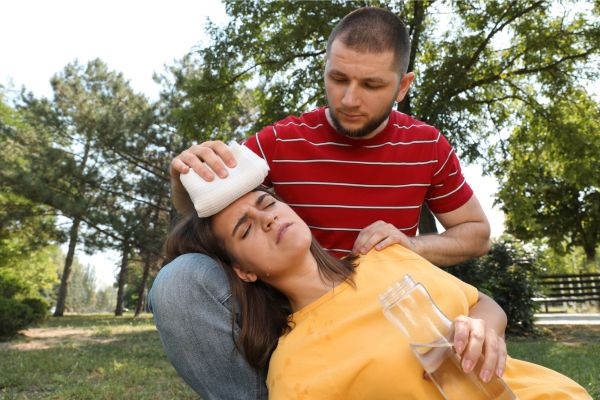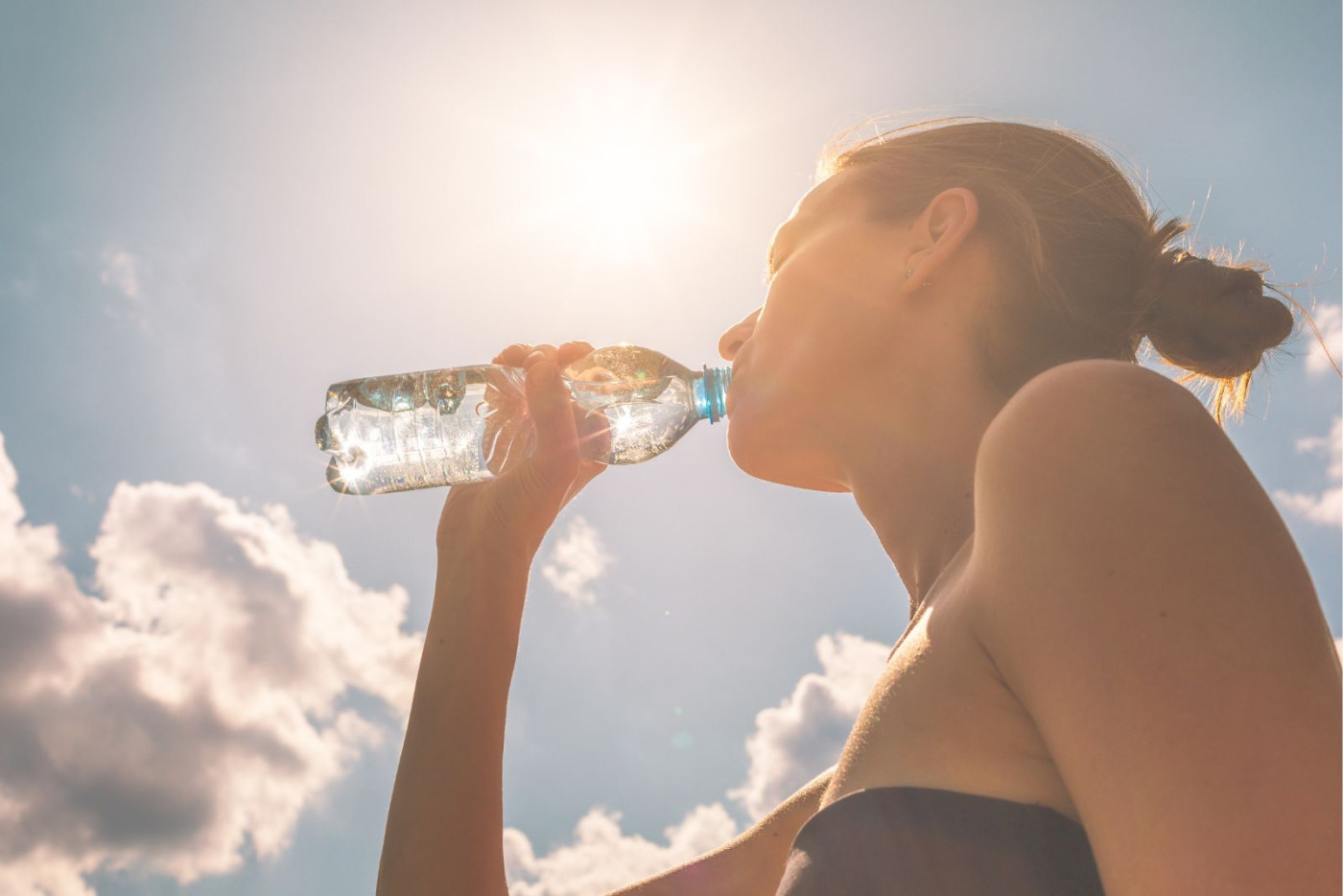Summer heat is upon us, and staying hydrated in the sunny, hot conditions is very important. Not only will hydration keep you comfortable, but it can also prevent serious heat-related illnesses that can make you sick and even lead to death.
Drink Plenty of Water
The first tip for staying hydrated seems pretty obvious: drink plenty of water. But what does that mean?
- Drink before you’re thirsty. If you are feeling a high level of thirst, chances are you are already dehydrated. Avoid dehydration by drinking water on a consistent basis.
- Take frequent water breaks. Whether you are working out or doing other activities, you may not want to stop to drink water, but it is very important to do so. Drink 8 to 10 ounces (about one full glass) before starting any activity, then drink another 7 to 10 ounces every 20 to 30 minutes.
- Track your water intake to ensure you are getting enough each day. The U.S. National Academies of Sciences, Engineering, and Medicine recommend men drink about 15.5 cups (3.7 liters) of fluid each day. For women, they recommend 11.5 cups (2.7 liters) a day. The best way to ensure you are getting enough is to track your intake.
Eat Water-Rich Foods
Did you know that 20% of your fluid intake comes from food? You can keep yourself hydrated by eating fruits and vegetables that are high in water content, including:
 Cucumbers
Cucumbers- Celery
- Peppers
- Tomatoes
- Watermelon
- Strawberries
- Grapefruit
- Cauliflower, s
- Spinach
- Radishes
- Broccoli
Restore Electrolytes
When you sweat, you lose important electrolytes like sodium, potassium, and chloride. Restoring these electrolytes can help you stave off hydration and improve overall health. Options to restore lost electrolytes include:
- Sports drinks
- Coconut water
- Pretzels
- Bananas
Know the Signs of Heat-Related Illnesses
Even those of us with the best intentions sometimes slip up and don’t keep up on hydration like we should. This could mean excess thirst or, worse, a heat-related illness. Due to the serious nature of heat-related illness and the damage they can do, it’s important to know the signs.
Heat Stroke
 This is the most serious heat-related illness. When it occurs, the body can no longer control its temperature, and the body is unable to cool down. Heat stroke can cause permanent disability or death if a person does not receive emergency treatment. If someone is exhibiting signs of heat stroke, get them immediate emergency care. Symptoms of heat stroke include:
This is the most serious heat-related illness. When it occurs, the body can no longer control its temperature, and the body is unable to cool down. Heat stroke can cause permanent disability or death if a person does not receive emergency treatment. If someone is exhibiting signs of heat stroke, get them immediate emergency care. Symptoms of heat stroke include:
- High body temperature (103 F or higher)
- Hot, red, dry, or damp skin
- Fast, strong pulse
- Headache and/or dizziness
- Nausea
- Confusion
- Losing consciousness
Heat Exhaustion
Heat exhaustion is the body’s response to loss of water and salt, usually from excessive heat and sweating. If left untreated, it can lead to heat stroke. The good news is that you may be able to treat heat exhaustion with easy steps like moving to a cool place and resting, removing excess clothing, using fans, and drinking sports drinks. If these don’t help or symptoms persist, seek medical attention. Symptoms of heat exhaustion include:
- Heavy sweating
- Cold, pale, and clammy skin
- Fast, weak pulse
- Nausea or vomiting
- muscle cramps
- Tiredness or weakness
- Headache and/or dizziness
- Fainting
Heat Cramps
Heat cramps affect those who sweat a lot during strenuous activity, which depletes the body’s salt and moisture levels. Low salt levels in muscles causes painful cramps. Heat cramps may also be a symptom of heat exhaustion. If someone is experiencing heat cramps, they should drink water and have a snack that replaces carbohydrates and electrolytes and avoid salt tablets. However, individuals who have heart problems, are on a low-sodium diet, or have cramps that do not subside within an hour should seek medical help. Symptoms of heat cramps include:
- Heavy sweating during intense exercise
- Muscle pains or spasms
Heat Rash
Heat rash is a skin irritation caused by excessive sweating during hot, humid weather. Those exhibiting symptoms of heat rash should go to a cooler, less humid environment, keep the rash area dry, apply powder to increase comfort, and avoid ointments and cream. Symptoms of heat rash include:
- Red clusters of pimples or small blisters that usually appears on the neck, upper chest, groin, under the breasts, and in elbow creases
